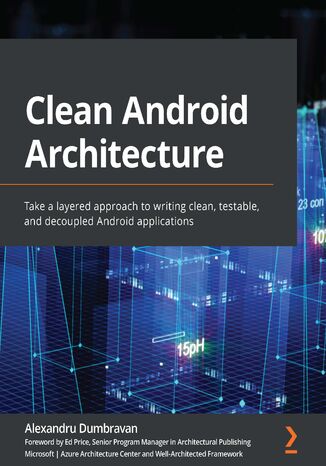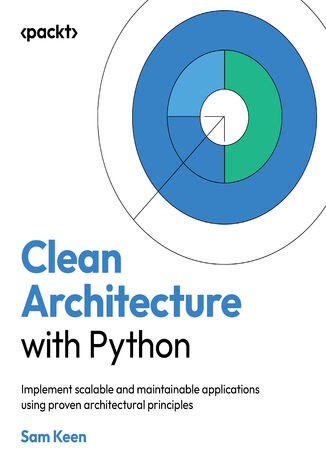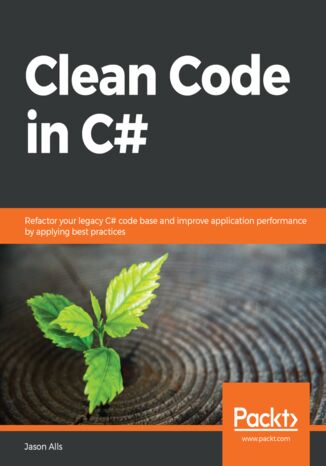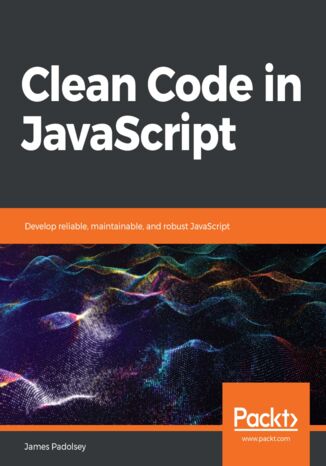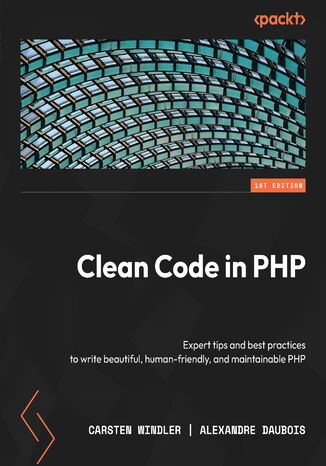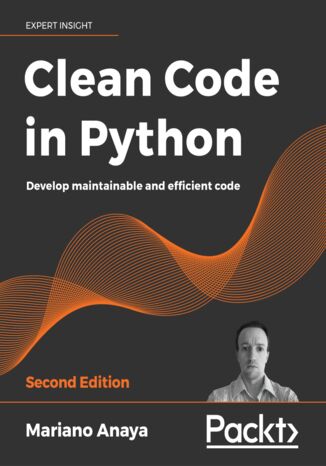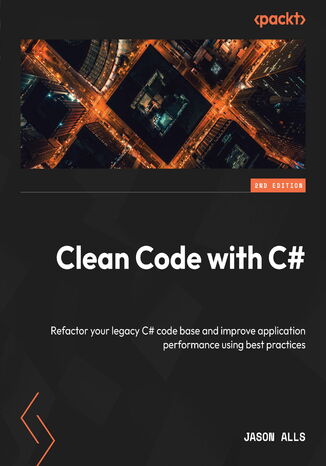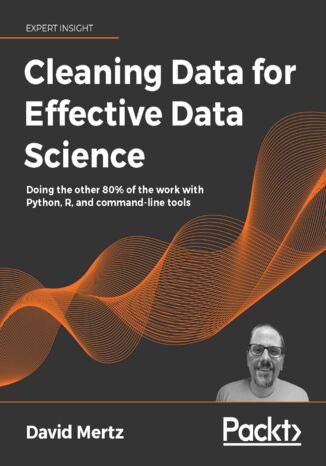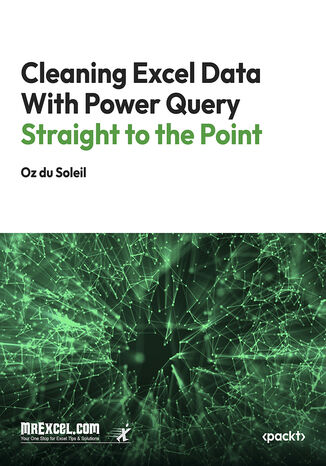Kategorien
E-Books
-
Wirtschaft
- Bitcoin
- Geschäftsfrau
- Coaching
- Controlling
- E-Business
- Ökonomie
- Finanzen
- Börse und Investitionen
- Persönliche Kompetenzen
- Computer im Büro
- Kommunikation und Verhandlungen
- Kleines Unternehmen
- Marketing
- Motivation
- Multimedia-Training
- Immobilien
- Überzeugung und NLP
- Steuern
- Sozialpolitik
- Handbȕcher
- Präsentationen
- Führung
- Public Relation
- Berichte, Analysen
- Geheimnis
- Social Media
- Verkauf
- Start-up
- Ihre Karriere
- Management
- Projektmanagement
- Personal (HR)
-
Für Kinder
-
Für Jugendliche
-
Bildung
-
Enzyklopädien, Wörterbücher
-
E-Presse
- Architektura i wnętrza
- Sicherheit und Gesundheit am Arbeitsplatz
- Biznes i Ekonomia
- Haus und Garten
- E-Business
- Ekonomia i finanse
- Esoterik
- Finanzen
- Persönliche Finanzen
- Unternehmen
- Fotografie
- Informatik
- HR und Gehaltsabrechnung
- Frauen
- Computer, Excel
- Buchhaltung
- Kultur und Literatur
- Wissenschaftlich und akademisch
- Umweltschutz
- meinungsbildend
- Bildung
- Steuern
- Reisen
- Psychologie
- Religion
- Landwirtschaft
- Buch- und Pressemarkt
- Transport und Spedition
- Gesundheit und Schönheit
-
Geschichte
-
Informatik
- Office-Programme
- Datenbank
- Bioinformatik
- IT Branche
- CAD/CAM
- Digital Lifestyle
- DTP
- Elektronik
- Digitale Fotografie
- Computergrafik
- Spiele
- Hacking
- Hardware
- IT w ekonomii
- Wissenschaftliche Pakete
- Schulbücher
- Computergrundlagen
- Programmierung
- Mobile-Programmierung
- Internet-Server
- Computernetzwerke
- Start-up
- Betriebssysteme
- Künstliche Inteligenz
- Technik für Kinder
- Webmaster
-
Andere
-
Fremdsprachen lernen
-
Kultur und Kunst
-
Lektüre
-
Literatur
- Anthologien
- Ballade
- Biografien und Autobiografien
- Für Erwachsene
- Drama
- Tagebücher, Memoiren, Briefe
- Epos
- Essay
- Science Fiction
- Felietonys
- Fiktion
- Humor, Satire
- Andere
- Klassisch
- Krimi
- Sachbücher
- Belletristik
- Mity i legendy
- Nobelpreisträger
- Kurzgeschichten
- Gesellschaftlich
- Okultyzm i magia
- Erzählung
- Erinnerungen
- Reisen
- Gedicht
- Poesie
- Politik
- Populärwissenschaftlich
- Roman
- Historischer Roman
- Prosa
- Abenteuer
- Journalismus
- Reportage
- Romans i literatura obyczajowa
- Sensation
- Thriller, Horror
- Interviews und Erinnerungen
-
Naturwissenschaften
-
Sozialwissenschaften
-
Schulbücher
-
Populärwissenschaft und akademisch
- Archäologie
- Bibliotekoznawstwo
- Filmwissenschaft
- Philologie
- Polnische Philologie
- Philosophie
- Finanse i bankowość
- Erdkunde
- Wirtschaft
- Handel. Weltwirtschaft
- Geschichte und Archäologie
- Kunst- und Architekturgeschichte
- Kulturwissenschaft
- Linguistik
- Literaturwissenschaft
- Logistik
- Mathematik
- Medizin
- Geisteswissenschaften
- Pädagogik
- Lehrmittel
- Populärwissenschaftlich
- Andere
- Psychologie
- Soziologie
- Theatrologie
- Teologie
- Theorien und Wirtschaftswissenschaften
- Transport i spedycja
- Sportunterricht
- Zarządzanie i marketing
-
Handbȕcher
-
Spielanleitungen
-
Professioneller und fachkundige Leitfaden
-
Jura
- Sicherheit und Gesundheit am Arbeitsplatz
- Geschichte
- Verkehrsregeln. Führerschein
- Rechtswissenschaften
- Gesundheitswesen
- Allgemeines. Wissenskompendium
- akademische Bücher
- Andere
- Bau- und Wohnungsrecht
- Zivilrecht
- Finanzrecht
- Wirtschaftsrecht
- Wirtschafts- und Handelsrecht
- Strafrecht
- Strafrecht. Kriminelle Taten. Kriminologie
- Internationales Recht
- Internationales und ausländisches Recht
- Gesundheitsschutzgesetz
- Bildungsrecht
- Steuerrecht
- Arbeits- und Sozialversicherungsrecht
- Öffentliches, Verfassungs- und Verwaltungsrecht
- Familien- und Vormundschaftsrecht
- Agrarrecht
- Sozialrecht, Arbeitsrecht
- EU-Recht
- Industrie
- Agrar- und Umweltschutz
- Wörterbücher und Enzyklopädien
- Öffentliche Auftragsvergabe
- Management
-
Führer und Reisen
- Afrika
- Alben
- Südamerika
- Mittel- und Nordamerika
- Australien, Neuseeland, Ozeanien
- Österreich
- Asien
- Balkan
- Naher Osten
- Bulgarien
- China
- Kroatien
- Tschechische Republik
- Dänemark
- Ägypten
- Estland
- Europa
- Frankreich
- Berge
- Griechenland
- Spanien
- Niederlande
- Island
- Litauen
- Lettland
- Mapy, Plany miast, Atlasy
- Miniführer
- Deutschland
- Norwegen
- Aktive Reisen
- Polen
- Portugal
- Andere
- Przewodniki po hotelach i restauracjach
- Russland
- Rumänien
- Slowakei
- Slowenien
- Schweiz
- Schweden
- Welt
- Türkei
- Ukraine
- Ungarn
- Großbritannien
- Italien
-
Psychologie
- Lebensphilosophien
- Kompetencje psychospołeczne
- zwischenmenschliche Kommunikation
- Mindfulness
- Allgemeines
- Überzeugung und NLP
- Akademische Psychologie
- Psychologie von Seele und Geist
- Arbeitspsychologie
- Relacje i związki
- Elternschafts- und Kinderpsychologie
- Problemlösung
- Intellektuelle Entwicklung
- Geheimnis
- Sexualität
- Verführung
- Aussehen ind Image
- Lebensphilosophien
-
Religion
-
Sport, Fitness, Diäten
-
Technik und Mechanik
Hörbücher
-
Wirtschaft
- Bitcoin
- Geschäftsfrau
- Coaching
- Controlling
- E-Business
- Ökonomie
- Finanzen
- Börse und Investitionen
- Persönliche Kompetenzen
- Kommunikation und Verhandlungen
- Kleines Unternehmen
- Marketing
- Motivation
- Immobilien
- Überzeugung und NLP
- Steuern
- Sozialpolitik
- Handbȕcher
- Präsentationen
- Führung
- Public Relation
- Geheimnis
- Social Media
- Verkauf
- Start-up
- Ihre Karriere
- Management
- Projektmanagement
- Personal (HR)
-
Für Kinder
-
Für Jugendliche
-
Bildung
-
Enzyklopädien, Wörterbücher
-
E-Presse
-
Geschichte
-
Informatik
-
Andere
-
Fremdsprachen lernen
-
Kultur und Kunst
-
Lektüre
-
Literatur
- Anthologien
- Ballade
- Biografien und Autobiografien
- Für Erwachsene
- Drama
- Tagebücher, Memoiren, Briefe
- Epos
- Essay
- Science Fiction
- Felietonys
- Fiktion
- Humor, Satire
- Andere
- Klassisch
- Krimi
- Sachbücher
- Belletristik
- Mity i legendy
- Nobelpreisträger
- Kurzgeschichten
- Gesellschaftlich
- Okultyzm i magia
- Erzählung
- Erinnerungen
- Reisen
- Poesie
- Politik
- Populärwissenschaftlich
- Roman
- Historischer Roman
- Prosa
- Abenteuer
- Journalismus
- Reportage
- Romans i literatura obyczajowa
- Sensation
- Thriller, Horror
- Interviews und Erinnerungen
-
Naturwissenschaften
-
Sozialwissenschaften
-
Populärwissenschaft und akademisch
- Archäologie
- Philosophie
- Wirtschaft
- Handel. Weltwirtschaft
- Geschichte und Archäologie
- Kunst- und Architekturgeschichte
- Kulturwissenschaft
- Literaturwissenschaft
- Mathematik
- Medizin
- Geisteswissenschaften
- Pädagogik
- Lehrmittel
- Populärwissenschaftlich
- Andere
- Psychologie
- Soziologie
- Teologie
- Zarządzanie i marketing
-
Handbȕcher
-
Professioneller und fachkundige Leitfaden
-
Jura
-
Führer und Reisen
-
Psychologie
- Lebensphilosophien
- zwischenmenschliche Kommunikation
- Mindfulness
- Allgemeines
- Überzeugung und NLP
- Akademische Psychologie
- Psychologie von Seele und Geist
- Arbeitspsychologie
- Relacje i związki
- Elternschafts- und Kinderpsychologie
- Problemlösung
- Intellektuelle Entwicklung
- Geheimnis
- Sexualität
- Verführung
- Aussehen ind Image
- Lebensphilosophien
-
Religion
-
Sport, Fitness, Diäten
-
Technik und Mechanik
Videokurse
-
Datenbank
-
Big Data
-
Biznes, ekonomia i marketing
-
Cybersicherheit
-
Data Science
-
DevOps
-
Für Kinder
-
Elektronik
-
Grafik / Video / CAX
-
Spiele
-
Microsoft Office
-
Entwicklungstools
-
Programmierung
-
Persönliche Entwicklung
-
Computernetzwerke
-
Betriebssysteme
-
Softwaretest
-
Mobile Geräte
-
UX/UI
-
Web development
-
Management
Podcasts
Class and Cultural Narratives. The Upper Silesia Case
Paweł Ćwikła, Monika Gnieciak, Kazimiera Wódz
The emphasis of this book is on understanding local identities through the representations produced and disseminated by local people, residents of working class estates placed in Upper Silesia, captured in the regional literature. Presented analysis of the writings of Kazimierz Kutz and Stefan Szymutko aims to find a panoramic view of a postindustrial world, sensitivity to region’s specificity, awareness of industrial and agricultural past, a gallery of characters entangled with a difficult history of local communities. The assumption which was fundamental to the research was the fact that literature poses a reservoir of identity representations. By means of autobiographies, family stories and regional novels the story of Silesia was retold, constructed out of a variety of memories and personal narratives. Thus the analyzed novels constitute a particular type of social representations of Upper Silesia, the representations which - to a more extent than to an individual – belong to a community within which they are created. Their nature consists in ongoing reproduction, redefinition, constant creation of Upper Silesian's past and presence. Paweł Ćwikła, PhD in sociology, researcher in Department of Contemporary Culture Research, Institute of Sociology, University of Silesia. Monika Gnieciak, M.A. in sociology, University of Silesia, 2001, Katowice, M.A. in science of culture, University of Silesia, 2004, Katowice, PhD in Humanities, University of Silesia, 2007, Katowice. Researcher in Department of Contemporary Culture Research, Institute of Sociology, University of Silesia. Kazimiera Wódz, Professor of Sociology, Head of Department of Cultural Studies and Social Work Unit Institute of Sociology, University of Silesia.
Mercury Learning and Information, Franz Lanzinger
This book teaches you to design and develop classic arcade video games. Using modern, free software tools like Unity, you’ll create five retro games inspired by the classics. All source code, art, and sound files are provided in the companion files. You'll enjoy customizing graphics, adjusting scoring, coding AI, and creating sound effects, gaining a deep understanding of the roots of modern video game design from the '70s and '80s.The course begins with an introduction and essential tools, then guides you through creating various retro games. Each chapter builds on the previous one with detailed instructions, exercises, and classic game design rules. The book includes historical anecdotes from a former Atari programmer and insights on applying classic game design concepts to modern games.Understanding these design elements is crucial for developing engaging video games. This book transitions readers from beginners to proficient game developers, blending theoretical knowledge with practical skills. Companion files enhance the learning experience, making this book an invaluable resource for mastering classic game design with modern tools.
Claudius Bombarnak, journaliste au journal Twentieth Century, a pour mission de décrire un voyage le long du grand chemin de fer transasiatique qui commence Uzun-Ada, traverse le Turkestan russe et chinois et se termine Beijing. En chemin, il rencontre des personnes intéressantes de différentes nationalités, comme le baron allemand Weisschitzerdurfer, qui tente de battre le record du monde de vitesse en 39 jours, et le roumain Kinko qui voyage dans une boîte amoureuse, qui sauve plus tard tous les passagers et léquipage du train.
Spragniony byłem świata, jaki jej się przytrafiłKiedy się ma do czynienia z twórcą takim, jak Jarosław Wojciechowski, człowiek nigdy nie wie, gdzie go słowa artysty zaprowadzą. Czytanie jego utworów to, jak sam lubi mówić, jazda na maksa. Dokąd więc teraz Jarek nas zabrał?Fabuła utworu jest niezwykle prosta. Opisuje spotkanie dwojga bliskich sobie osób. Z ich rozmowy nad kubkiem kawy wyłania się przed czytelnikiem świat, którego raczej się nie spodziewamy w tak prozaicznym miejscu, jak kuchnia. Bohaterka opowiada treść swojego niezwykłego snu, który wytrącił ją z równowagi, zadziwił, przeobraził wewnętrznie i pozostawił z całą masą niezadanych pytań. Z każdym jej słowem wizja staje się coraz dziwniejsza, coraz bardziej zaskakująca. Aż dochodzimy do momentu w opowieści, w którym następna przerwa na łyk kawy czy złapanie oddechu drażni niedopowiedzeniem.Drugim bohaterem jest słuchacz człowiek nastawiony na wewnętrzny odbiór przekazywanych mu rewelacji. Ma niezwykle ważne zadanie do spełnienia. Otrzymuje pewien dar od jego reakcji zależy, czym się on stanie. Prezentem cennym czy zakłóceniami w ciszy popołudniowego odpoczynku. Całą swoją postawą akcentuje, że jest gotowy na wypełnienie swojego obowiązku z należytą uwagą i przekonaniem, że oto trafiła mu się niezwykłość, gratka godna kolekcjonera opowieści. To jego reakcje na historię opowiedzianą przez towarzyszkę powodują, że sen staje się plastyczny, realny, godny uwiecznienia. To jego uczucia, emocje urzeczywistniają wymiar, do którego autor stara się czytelnika przenieść.I na tym prostota fabuły się kończy, bo w książkach tego autora nic nie może być klarowne i jednowymiarowe.Tematem tego utworu jest poszukiwanie, odnajdywanie i gubienie. Bohater wyznaczył nam kierunek: Świat otworzył mi się, świat wyobraźni i ducha, niczym wielka księga życia. Żeby zrozumieć tę książkę, czytelnik musi przekroczyć pewne granice, podążając za emocjami opisanych postaci. Musi wyobrazić sobie uniwersum, do którego zabiera nas jego sprawczyni. Nie jest to zadanie trudne, wystarczy uruchomić wyobraźnię i empatię.Gdzie jest ten świat? Okazuje się, że całkiem niedaleko. Miejscem, które ogniskuje całą rzeczywistość, jest niewielka podwłocławska miejscowość Bobrowniki i ruiny zamku. W tym to punkcie dzieją się niezwykłe wydarzenia wokół Clavusa przedmiotu posiadającego własną osobowość. To jego poszukujemy, nastawiamy się na zrozumienie niezwykłości tego przedmiotu, czasem odnajdujemy ukryty w nim sens, a potem, co jest nieuchronne, gubimy go bezpowrotnie. A to wszystko dzieje się w miejscu niemalże magicznym, posiadającym niezwykłe wibracje, sekretne komnaty, ukryte skarby i wszystko, co nosi w sobie znamiona wielkiej tajemnicy. Po tym wymiarze poruszamy się uwięzieni w ciele sokoła, który ptakiem bynajmniej nie jest. Obserwujemy mieszkańców zamku i gości do niego przybywających. Podsłuchujemy ich niedokończonych rozmów, próbując jednocześnie zrozumieć, co nam umknęło. Odwiedzamy przeszłość, czas świetności zamku. I w sposób nieuchronny gubimy wymiar rzeczywisty, by odwiedzić miejsca jeszcze dziwniejsze, nierealne, metafizyczne oczywiście przez autora niezdefiniowane. Bo nic w tej opowieści nie jest jednoznaczne i klarowne. Bo ta opowieść to kolejny flirt z wyobraźnią odbiorcy, który poruszając się w labiryncie metafor i symboli musi odnaleźć nieprostą drogę do zrozumienia, czego właściwie poszukuje, co gubi, a co odnajduje w otwartej księdze życia.Książka Jarka to po raz kolejny opowieść uniwersalna. Akcja co prawda wyrasta z codzienności, ale autor przenosi czytelnika w czasy średniowiecza. I tak wędrując w wizji bohaterki, skaczemy między dwoma wymiarami czasoprzestrzeni, śledzimy świat dawny, by odnaleźć w nim wartości czasu współczesnego. Śledzimy poczynania bohaterów, by co jakiś czas mierzyć się z dygresjami komentującym współczesność tak dobrze i boleśnie nam znaną. Bo jak przekonuje nas artysta, zawsze jesteśmy spragnieni świata, który przytrafia się innym. A skoro tkwi w nas to pragnienie, trzeba zanurzyć się strumieniu świata wyobraźni i ducha. To tam ostatecznie odnajdziemy odpowiedzi naznaczeni piętnem Clavusa.Bożena LaskowskaJarosław WojciechowskiUrodziłem się 1955 r. we Włocławku, jestem poetą i prozaikem. Mój życiorys jest wyjątkowo burzliwy, co bez wątpienia miało wpływ na mą twórczość literacką. Debiutowałem w III programie Polskiego Radia w 1980 r. W latach 70 i 80 ubiegłego wieku w grupie literackiej Kujawy W roku 1995 współtworzyłem grupę literacką Kujawskie Wolne Pióro zostając jej przewodniczącym. Po pół roku działalności grupy literackiej współuczestniczyłem w jej przekształceniu w Stowarzyszenie Pisarzy Regionu Kujaw i Ziemi Dobrzyńskiej zostając jej pierwszym prezesem. Za mojej prezesury powstaje pismo społeczno literackie AWERS o zasięgu ogólnopolskim. W 1996 r. nawiązuję współpracę z Redaktorem naczelnym "Kultury Paryskiej" Panem Jerzym Giedroyciem. Po dwóch latach działalności na rzecz Stowarzyszenia rezygnuję z funkcji prezesa jak i członkowstwa by skupić się na własnej twórczości. W 1998 roku otrzymuję nominację do nagrody literackiej im. Kościelskich, której kapituła znajduje się w Szwajcarii. Nominację otrzymuję z rąk Pani dr Danilewicz Zielińskiej - członka kapituły. W 2001 roku Minister Kultury i Dziedzictwa Narodowego, za działalność kulturalną w ochronie i kształtowaniu Kultury Polskiej w latach 80-tych wyróżnia mnie odznaką Zasłużony Działacz Kultury W latach 1999-2001 pełnię funkcję Rzecznika Prasowego Zachodnio-Pomorskiej Szkoły Biznesu we Włocławku. W latach 1999 2003 członek Rady Społecznej Szpitala wojewódzkiego we Włocławku. W latach 1999 2000 i 2005 stypendysta Ministra Kultury i Dziedzictwa Narodowego. Obecnie w Związku Literatów Polskich Oddziału Warszawskiego.
Claws Of The Tigress is an adventurous historical romance set in 16th-century Italy. The main character is Tizzo, a master swordsman, known as Firebrand because of his flaming red hair and flame-blue eyes. Max Brand (1892-1944) is the best-known pen name of widely acclaimed author Frederick Faust, creator of Destry, Dr. Kildare, and other beloved fictional characters. Prolific in many genres he wrote historical novels, detective mysteries, pulp fiction stories and many more. His love for mythology was a constant source of inspiration for his fiction, and it has been speculated that these classical influences accounted in some part for his success as a popular writer.
As an application’s code base increases, it becomes harder for developers to maintain existing features and introduce new ones. In this clean architecture book, you'll learn to identify when and how this problem emerges and how to structure your code to overcome it.The book starts by explaining clean architecture principles and Android architecture components and then explores the tools, frameworks, and libraries involved. You’ll learn how to structure your application in the data and domain layers, the technologies that go in each layer, and the role that each layer plays in keeping your application clean. You’ll understand how to arrange the code into these two layers and the components involved in assembling them. Finally, you'll cover the presentation layer and the patterns that can be applied to have a decoupled and testable code base.By the end of this architecture book, you'll be able to build an application following clean architecture principles and have the knowledge you need to maintain and test the application easily.
In the rapidly evolving tech industry, software applications struggle to keep pace with changing business needs, leaving developers grappling with complex codebases that resist change, ultimately reducing productivity and increasing technical debt. Clean Architecture with Python offers a powerful approach to address these challenges. Drawing from his extensive experience architecting cloud-native systems, Sam Keen helps you transform complex architectural challenges into digestible, implementable solutions.This book teaches essential principles for effective development, emphasizing the Pythonic implementation of Clean Architecture. Through practical examples, you'll learn how to create modular, loosely coupled systems that are easy to understand, modify, and extend. The book covers key concepts such as the Dependency Rule, separation of concerns, and domain modeling, all tailored for Python development.By the end of this book, you'll be able to apply Clean Architecture principles effectively in your Python projects. Whether you're building new systems or managing existing ones, you'll have the skills to create more maintainable and adaptable applications. This approach will enhance your ability to respond to changing requirements, setting you up for long-term success in your development career.
Traditionally associated with developing Windows desktop applications and games, C# is now used in a wide variety of domains, such as web and cloud apps, and has become increasingly popular for mobile development. Despite its extensive coding features, professionals experience problems related to efficiency, scalability, and maintainability because of bad code. Clean Code in C# will help you identify these problems and solve them using coding best practices.The book starts with a comparison of good and bad code, helping you understand the importance of coding standards, principles, and methodologies. You’ll then get to grips with code reviews and their role in improving your code while ensuring that you adhere to industry-recognized coding standards. This C# book covers unit testing, delves into test-driven development, and addresses cross-cutting concerns. You’ll explore good programming practices for objects, data structures, exception handling, and other aspects of writing C# computer programs. Once you’ve studied API design and discovered tools for improving code quality, you’ll look at examples of bad code and understand which coding practices you should avoid.By the end of this clean code book, you’ll have the developed skills you need in order to apply industry-approved coding practices to write clean, readable, extendable, and maintainable C# code.
Clean Code in JavaScript. Develop reliable, maintainable, and robust JavaScript
Building robust apps starts with creating clean code. In this book, you’ll explore techniques for doing this by learning everything from the basics of JavaScript through to the practices of clean code. You’ll write functional, intuitive, and maintainable code while also understanding how your code affects the end user and the wider community.The book starts with popular clean-coding principles such as SOLID, and the Law of Demeter (LoD), along with highlighting the enemies of writing clean code such as cargo culting and over-management. You’ll then delve into JavaScript, understanding the more complex aspects of the language. Next, you’ll create meaningful abstractions using design patterns, such as the Class Pattern and the Revealing Module Pattern. You’ll explore real-world challenges such as DOM reconciliation, state management, dependency management, and security, both within browser and server environments. Later, you’ll cover tooling and testing methodologies and the importance of documenting code. Finally, the book will focus on advocacy and good communication for improving code cleanliness within teams or workplaces, along with covering a case study for clean coding.By the end of this book, you’ll be well-versed with JavaScript and have learned how to create clean abstractions, test them, and communicate about them via documentation.
Carsten Windler, Alexandre Daubois
PHP is a beginner-friendly language, but also one that is rife with complaints of bad code,;yet no clean code books are specific to PHP. Enter Clean Code in PHP. This book is a one-stop guide to learning the theory and best practices of clean code specific to real-world PHP app development environments.This PHP book is cleanly split to help you navigate through coding practices and theories to understand and adopt the nuances of the clean code paradigm. In addition to covering best practices, tooling for code quality, and PHP design patterns, this book also presents tips and techniques for working on large-scale PHP apps with a team and writing effective documentation for your PHP projects.By the end of this book, you’ll be able to write human-friendly PHP code, which will fuel your PHP career growth and set you apart from the competition.
Clean Code in Python. Develop maintainable and efficient code - Second Edition
Experienced professionals in every field face several instances of disorganization, poor readability, and testability due to unstructured code.With updated code and revised content aligned to the new features of Python 3.9, this second edition of Clean Code in Python will provide you with all the tools you need to overcome these obstacles and manage your projects successfully.The book begins by describing the basic elements of writing clean code and how it plays a key role in Python programming. You will learn about writing efficient and readable code using the Python standard library and best practices for software design.The book discusses object-oriented programming in Python and shows you how to use objects with descriptors and generators. It will also show you the design principles of software testing and how to resolve problems by implementing software design patterns in your code. In the concluding chapter, we break down a monolithic application into a microservices-based one starting from the code as the basis for a solid platform.By the end of this clean code book, you will be proficient in applying industry-approved coding practices to design clean, sustainable, and readable real-world Python code.
Clean Code in Python. Refactor your legacy code base
Python is currently used in many different areas such as software construction, systems administration, and data processing. In all of these areas, experienced professionals can find examples of inefficiency, problems, and other perils, as a result of bad code. After reading this book, readers will understand these problems, and more importantly, how to correct them. The book begins by describing the basic elements of writing clean code and how it plays an important role in Python programming. You will learn about writing efficient and readable code using the Python standard library and best practices for software design. You will learn to implement the SOLID principles in Python and use decorators to improve your code. The book delves more deeply into object oriented programming in Python and shows you how to use objects with descriptors and generators. It will also show you the design principles of software testing and how to resolve software problems by implementing design patterns in your code. In the final chapter we break down a monolithic application to a microservice one, starting from the code as the basis for a solid platform. By the end of the book, you will be proficient in applying industry approved coding practices to design clean, sustainable and readable Python code.
Traditionally associated with Windows desktop applications and game development, C# has expanded into web, cloud, and mobile development. However, despite its extensive coding features, professionals often encounter issues with efficiency, scalability, and maintainability due to poor code. Clean Code in C# guides you in identifying and resolving these problems using coding best practices.This book starts by comparing good and bad code to emphasize the importance of coding standards, principles, and methodologies. It then covers code reviews, unit testing, and test-driven development, and addresses cross-cutting concerns. As you advance through the chapters, you’ll discover programming best practices for objects, data structures, exception handling, and other aspects of writing C# computer programs. You’ll also explore API design and code quality enhancement tools, while studying examples of poor coding practices to understand what to avoid.By the end of this clean code book, you’ll have the developed the skills needed to apply industry-approved coding practices to write clean, readable, extendable, and maintainable C# code.
Data cleaning is the all-important first step to successful data science, data analysis, and machine learning. If you work with any kind of data, this book is your go-to resource, arming you with the insights and heuristics experienced data scientists had to learn the hard way.In a light-hearted and engaging exploration of different tools, techniques, and datasets real and fictitious, Python veteran David Mertz teaches you the ins and outs of data preparation and the essential questions you should be asking of every piece of data you work with.Using a mixture of Python, R, and common command-line tools, Cleaning Data for Effective Data Science follows the data cleaning pipeline from start to end, focusing on helping you understand the principles underlying each step of the process. You'll look at data ingestion of a vast range of tabular, hierarchical, and other data formats, impute missing values, detect unreliable data and statistical anomalies, and generate synthetic features. The long-form exercises at the end of each chapter let you get hands-on with the skills you've acquired along the way, also providing a valuable resource for academic courses.
MrExcel's Holy Macro! Books, Oz du Soleil
This book provides a step-by-step guide to using Power Query in Excel for efficient data cleaning and transformation. Starting with an introduction to its capabilities, it explains how to import data, handle missing values, and parse text fields with ease.Advanced techniques such as merging datasets, appending data, and performing joins are explored in detail. The book also covers grouping data, creating conditional and custom columns, and reshaping data through unpivoting for analysis. Each concept is illustrated with practical examples for clarity.By the end of the book, readers will be equipped with the skills to automate repetitive tasks and streamline workflows. Whether dealing with messy data or preparing datasets for analysis, this guide ensures you can confidently tackle any Excel data transformation challenge.
Hamilton Cleek is back or is he? Margot, Queen of the Apaches, the notorious French criminal gang, has been released on bail and vanished, Inspector Narkom of Scotland Yard has a series of inexplicable murders to solve, there is talk of revolution in Mauravania. And Cleek is missing. The stories collected here are some of the best about the clever and resourceful private detective Cleek, the man of the forty faces, who through his talents for disguise solves crime and mystery in London. Hold on to your hats for another thrilling ride as spying, murder, mysterious disappearances, jewel theft and horse theft, bombs and political intrigue rear their ugly heads. The stories range from well-done mysteries involving excellent deductive reasoning to fast-paced action tales set in exotic locales with highly romanticized villains.






